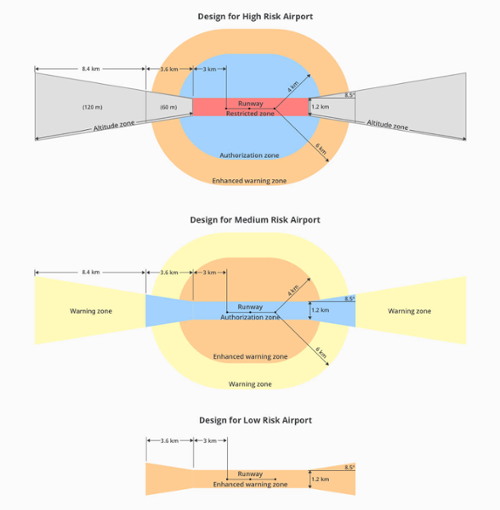PrecisionHawk, Inc. has announced a partnership with DJI to improve DJI’s geofencing technology. Leveraging PrecisionHawk’s Low Altitude Traffic and Airspace Safety (LATAS) platform, DJI will be able to refine airspace limitations for drone flights near airports in order to provide smarter protection for drones in critical areas and clarify restrictions.
This partnership will go into effect as DJI releases its Geospatial Environment Online (GEO) Version 2.0. To obtain reliable geospatial information for the enhanced shapes in GEO 2.0, DJI will use data from PrecisionHawk’s LATAS platform, replacing DJI’s previous geospatial data provider AirMap, said the company. LATAS will provide DJI’s customers with critical airspace information that will position them to fly safely in North America.
LATAS data supports detailed three-dimensional “bow tie” safety zones surrounding runway flight paths and uses complex polygon shapes around other sensitive facilities, rather than just simple circles. These new restrictions better reflect the actual safety risk posed in those areas, while allowing more flights to the side of runways where risk is substantially lower.
Assistive technology plays a critical role in supporting operators as they comply with safety standards. LATAS, which was tested under the FAA Pathfinder Program to facilitate safe beyond visual line of sight operations, brings a combined set of geospatial and software tools to the market. In addition to providing improved geospatial data, the LATAS platform features specialized display elements, including telemetry and access to the Harris real-time manned aircraft feed. Using these elements pilots can easily observe the relative altitude and horizontal separation of intruding aircraft and other mission-critical measures.
The updated GEO Version 2.0 will be phased in starting later this month, when the revised zones will take effect for airspace around airports in the United States.
(Image:This chart demonstrates how GEO 2.0 applies detailed, risk-based airspace boundaries from LATAS to the airspace around airports that can be considered to involve relative high, medium, and low risk)




